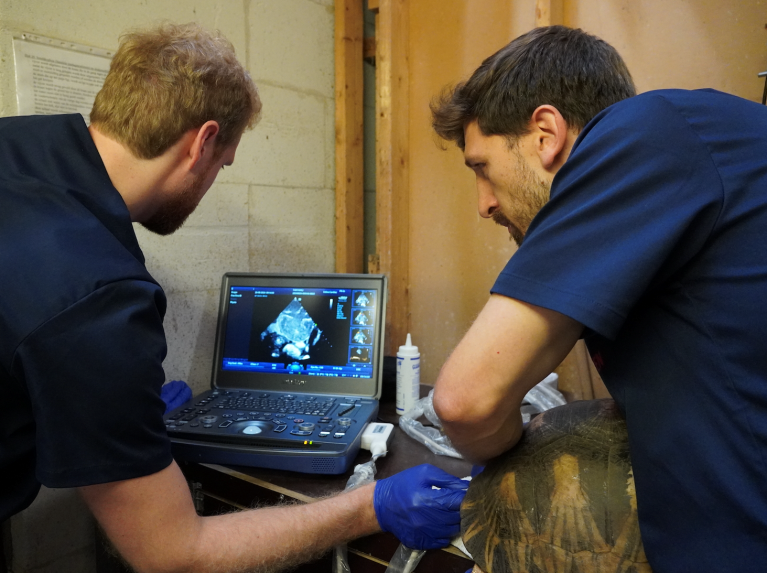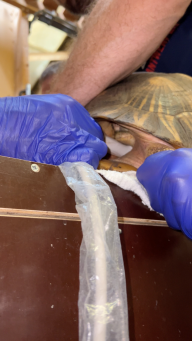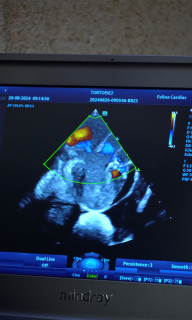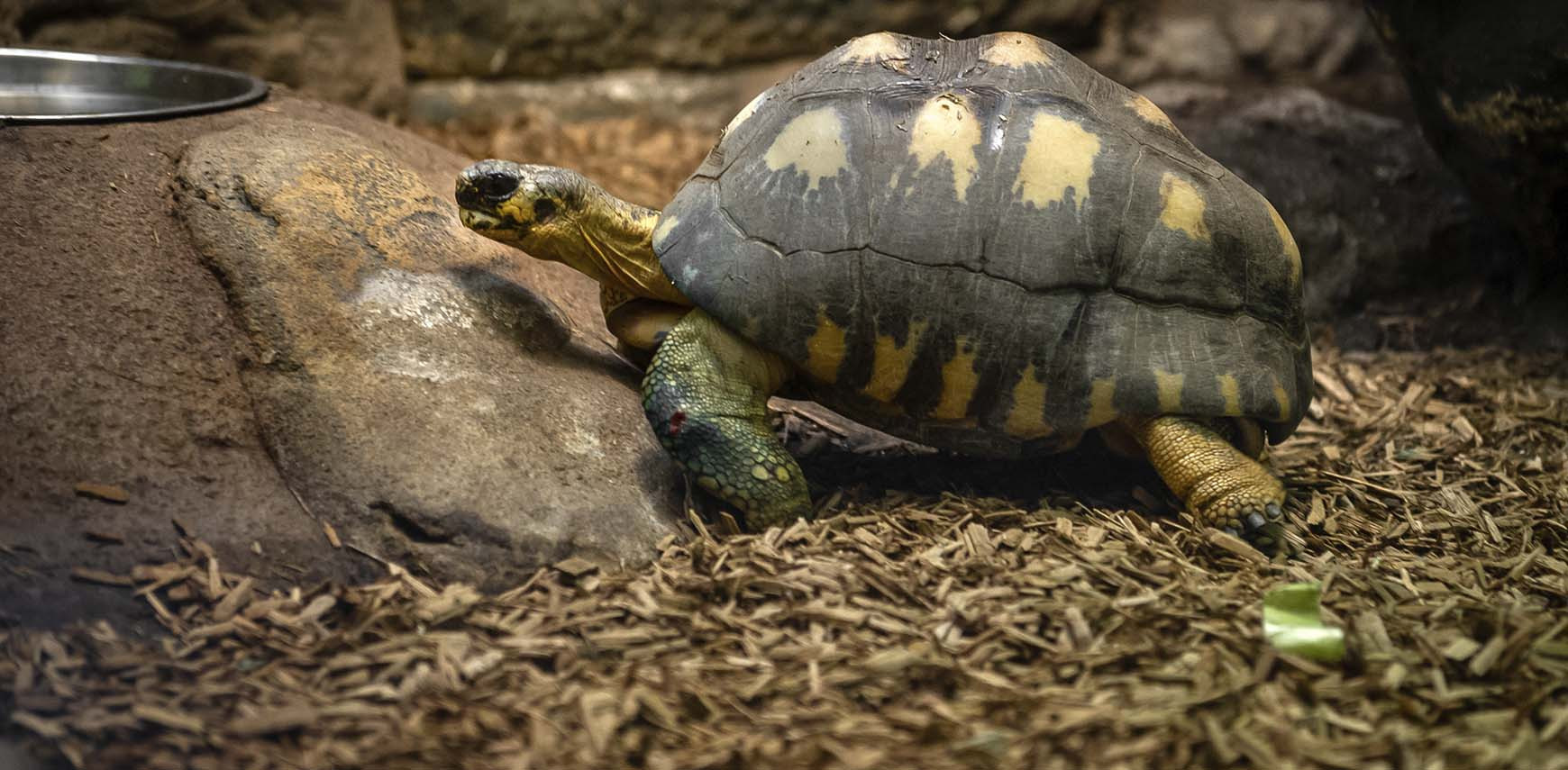In the hearts of tortoises
Some very special patients on the examination table at Antwerp ZOO’s veterinary facility: three radiated tortoises recently underwent an echocardiographic examination. ‘These tests are crucial for drawing up reference values that will help us make a worldwide contribution towards improving the diagnosis and treatment of this species,’ explains veterinarian Jonas Spruyt.

The interest in the hearts of the three radiated tortoises emerged from a specific request put forward by another zoo. ‘A radiated tortoise at Amsterdam’s Artis ZOO developed certain cardiac issues. To estimate the seriousness of the situation, the specialists wanted to compare the condition of this animal’s heart to that of other, healthy members of its species. They therefore contacted our zoo, after which we set to work on examining our own animals: two males and a female,’ confirms Spruyt.
A small heart, great insights

Spruyt and his team examined the hearts of the tortoises while the animals were still conscious. He explains: ‘We always avoid anaesthetising our animals, unless this is strictly necessary. Anaesthesia is always accompanied by unnecessary risks. It also affects an animal’s normal cardiac function, which would certainly pose a challenge in this examination.’ The tortoises remained calm, allowing the veterinarians to study their cardiac function without any problems.
The results of the ultrasound examination were reassuring. The atria (upper heart chambers) and ventricles (lower heart chambers) of all three animals at Antwerp ZOO were uniform in terms of size, and substantially smaller than that of the sick animal from Artis ZOO. It was immediately clear that the heart was functioning normally, which is of crucial importance in pumping blood through the body.
Of worldwide importance

D‘These findings and measurements comprise an important first step in increasing our understanding of cardiac issues among radiated tortoises,’ says Spruyt. ‘They help us identify deviations sooner and initiate targeted treatments. The first results we obtained can contribute to international reference values, so that zoos all over the word will benefit from this knowledge.’
The veterinary team also plans to conduct similar studies into reference values among other species.

